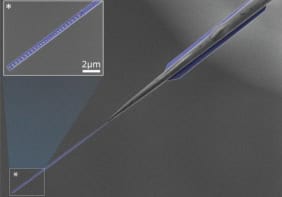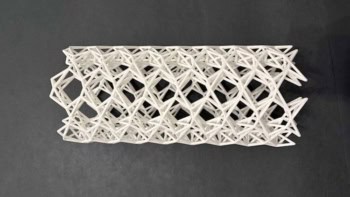
Physicists in China have invented a way of encapsulating a liquid droplet within an air bubble. The technique could lead to the development of new ways of delivering drugs and processing materials.
The formation of bubbles and droplets has long fascinated physicists and understanding the processes involved has guided the development of technologies as varied as inkjet printers and marine propellers. Bubbles and droplets can occur together in several configurations. A soap bubble in air, for example, can be thought of as an air bubble encapsulated within a droplet of soapy water.
New configuration
Now, Xin Fu and colleagues at Zhejiang University claim to be the first scientists to create and characterize a new bubble-droplet configuration that they have dubbed “drop encapsulated in a bubble”. In this scenario, a droplet is formed within an air bubble, which itself is formed within a liquid (see figure).
The structures are made by driving liquid (a glycerol-water solution) and air along a tiny tube and into a tank of fluid. The liquid and air undergo “Taylor flow”, which means that alternating “slugs” of liquid and bubbles of air travel along the tube. When a bubble emerges into the tank, it is pushed off the nozzle by the following slug of liquid in the tube. Under certain conditions, the slug will penetrate the bubble and become encapsulated within it.
Whether or not encapsulation occurs depends upon the Ohnesorge number of the liquid (the ratio of surface tension to viscosity) and the height-to-width ratio of the liquid slug when it enters the bubble. Fu and colleagues also found that encapsulation is robust against sheer flow and that the liquid is released when a bubble adheres to a solid surface.
The encapsulation process is described in Physical Review Letters.



